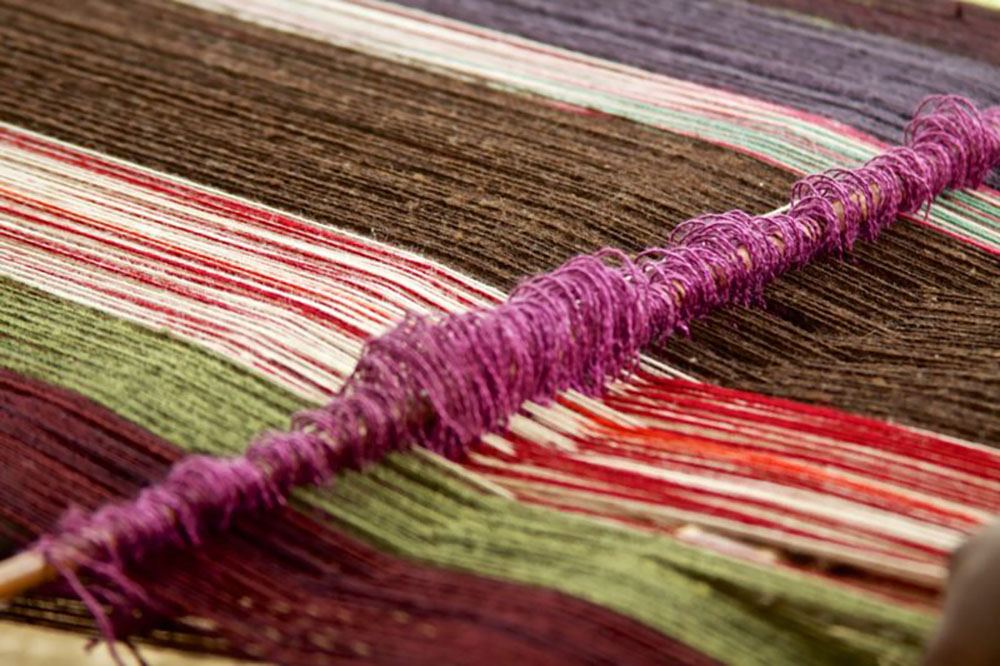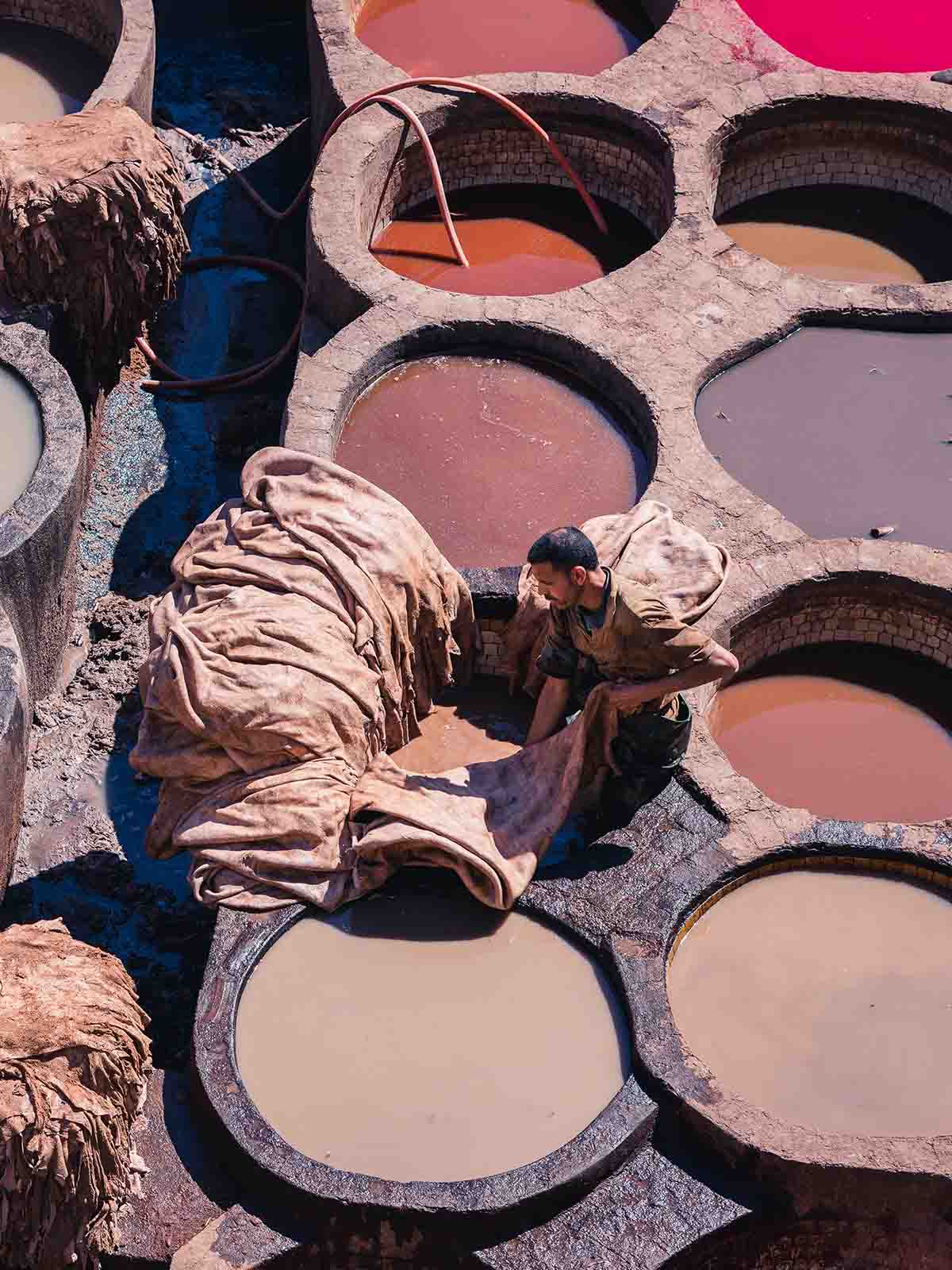Part of the excitement of travelling the world is experiencing the distinct aesthetics and visual style of different cultures. And colour is often at the heart of this cultural expression, particularly in the beautiful clothing worn in different parts of the world.
People have been wearing colours proudly for thousands of years. From social status to artistic statements, clothing colour has had a depth of meaning we probably don’t think about when we shift through the bursting racks of fast fashion chain stores. The synthetic dyes used to make most of our fabrics colourful now are poisoning waterways and causing serious health problems for workers around the world.
Before the invention of synthetic colours, clothing dyes were sourced from nature and applied through slowly cultivated traditional techniques – gentler on the environment, the makers and the wearers. So maybe it’s time we take a look around the world at some of the kinder ways to give our clothing that pop of colour we love.
Mali – Bogolan Mud Dyeing
‘Bogolan’ means ‘made from mud’ in Mali’s main language, Bambara. The base cloth is usually dyed deep reds or yellows by boiling bark and leaves. Then, using mud which has undergone a special fermentation process, distinct patterns are painted onto the fabric using sticks, brushes or reeds. The cloth then is soaked in natural solutions which bind the colour left behind by the mud to the fabric. Once dried, each piece of fabric becomes a totally unique work of art, in hues of red, brown, yellow, black and white, and patterns with a distinct regional aesthetic.
Japan – Shibori Dyeing
Indigo, the mesmerising deep blue that comes from the Indigofera tinctoria plant, has been called ‘the colour that changed the world’, and Japan is one place where the dye continues to hold a cherished place in the culture. The Shibori dyeing process was developed during a time when the Japanese lower classes were forbidden from wearing silk and brightly coloured clothing. The dark indigo colour, however, was allowed.
Shibori is both versatile and easily applied to cloth to create beautiful, unique designs, so it was a treasured method. It is now a recognised part of Japanese culture and emulated by fashionistas around the world. The process can involve a number of tactics such as stitching, wrapping or compressing fabric and creating stencils out of a rice based paste (katazome dyeing) to intentionally prevent the indigo dye from reaching certain parts of the cloth. The results – beautiful blue hues and unique white patterns – are simultaneously nuanced and striking.
India – Ayurvedic Dyes (Ayurvastra)
The world has always admired the vivid colours of the Indian subcontinent. From art to architecture, to celebrations, and clothing, colour and design are central to the country’s fascinating culture and history. The ancient Indian practice of Ayurvedic medicine not only uses plants to aid health and cure illness, it can also be drawn upon to create clothing dyes that are good for both the wearers and the planet. The traditional methods of Ayurvastra (Ayur meaning health, vastra meaning clothing – literally ‘healthy clothing’) allow the colours from these plants to be applied to cloth 100% naturally, without the use of any toxic chemicals and causing no harm to animals or people.
The Monsoon Blooms’ dye house, set in the quiet forests of Kerala in Southern India have been dyeing fabric for tens of thousands of years, using techniques passed down through the generations. There are over 1200 medicinal plants grown at the dye house, and those used to dye and bleach Monsoon Blooms’ underwear include turmeric, aloe vera, and the treasured neem plant.

Scotland – Harris Tweeds
Scotland’s Harris tweed (think Grandma’s favourite checked tweed jacket), worn for its hardy warmth, is traditionally dyed using natural colours and ecologically friendly dye processes. The deep reds, purples and yellow checks of the Scottish kilt are created from lichens, a type of fungus, and the plant woad (another source of indigo) to create the blues. The colours themselves are intended to evoke the rich hues of the Scottish landscape.
The dyeing of Harris tweed is actually the first step in the production of the fabric. The pure wool is dyed in different base colours, which are then broken up by hand and tossed together. They are then fed into a machine which shreds and blends these base colours, creating unique hues for every piece of yarn. Who knew the humble kilt was forged from such delicate craft?
The Mayans, Incas and Aztecs
The distinct patterns and colours of Mexican, Central and South American fabrics have been admired by the rest of the world since they were first discovered. And while grinding or boiling beetles and molluscs to produce clothing dye might not sound like everyone’s cup of tea (vegans take note), it is interesting as a traditional practice and has been cultivated across the continent for many years.
The Spanish conquistadors were in awe of the vivid colours of the fabrics they saw being made and traded by indigenous Mayans, Incans and Aztecs. The vivid reds, now known as cochineal, were produced by boiling and drying coccid insects and then grinding them into a red powder. This dye became a significant export for the region, and is now still used to colour many cosmetics – but as with anything now manufactured and traded en masse, there are questions to be asked about the ethics of the production process of this dye.
But there were, and still are natural, plant based dyeing methods used in the region too. Traditional Mayan artisans use boiled banana leaves as a mordent. This allows natural dyes to adhere to cloth and prevents them from fading with time.
The ‘jaspe’ method, like Shibori in Japan, relies on ‘tye-dyeing’. That’s right, tye-dye was being utilised long before it became the trademark of dreadlocked hippies and Bob Marley fans. Indigenous artisans create intricate patterns by tying their thread at pre-determined intervals before dyeing it. This prevents the dye from reaching certain points. From there, the threads are hand woven into their amazing, colourful fabrics.
The use of synthetic dyes by the fast fashion industry is poisoning waterways around the world and the chemicals in them can even pose health risks to wearers. But as we’ve seen, people around the world have been making unique colourful fabrics sustainably for thousands of years. Learning about traditional methods for making and dyeing textiles is a fascinating way to experience culture when you travel!

















